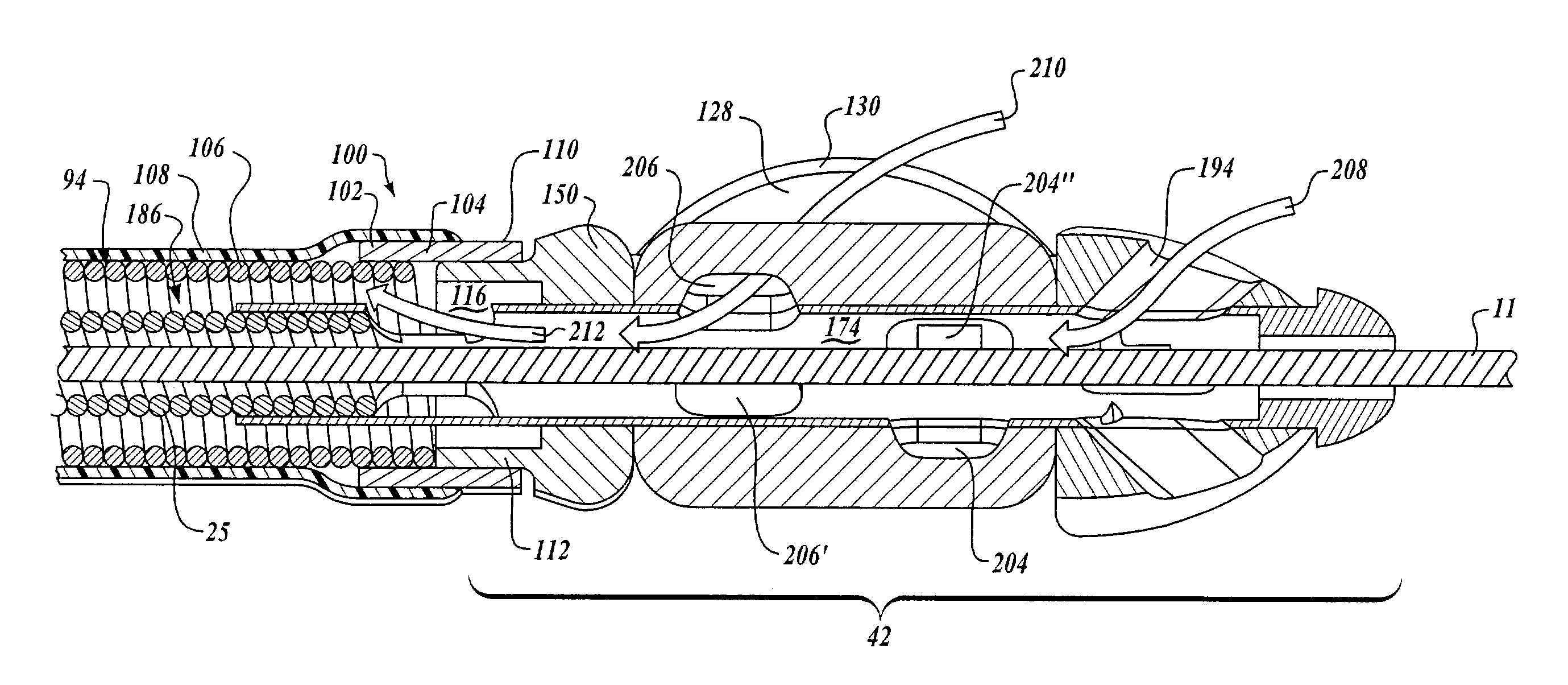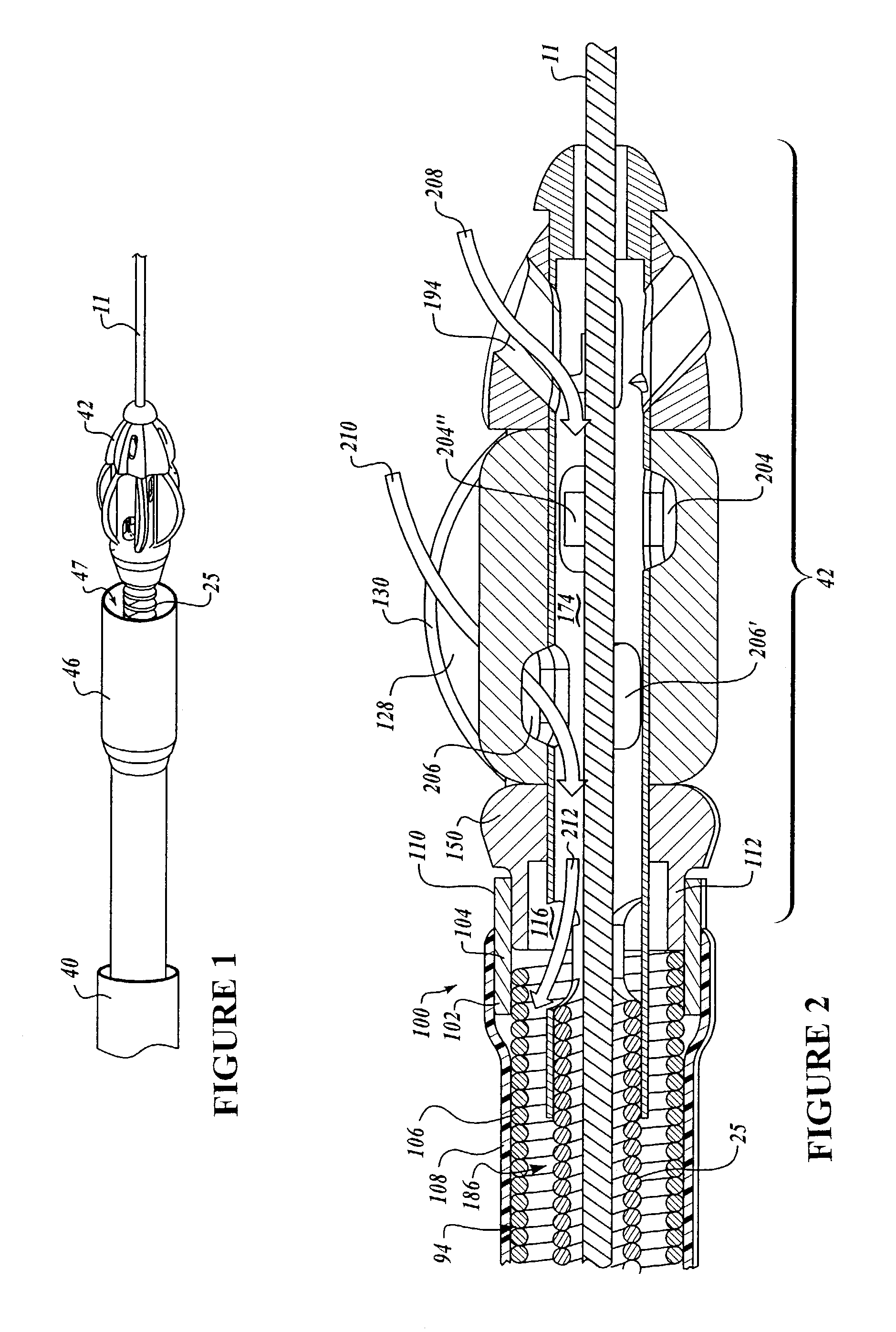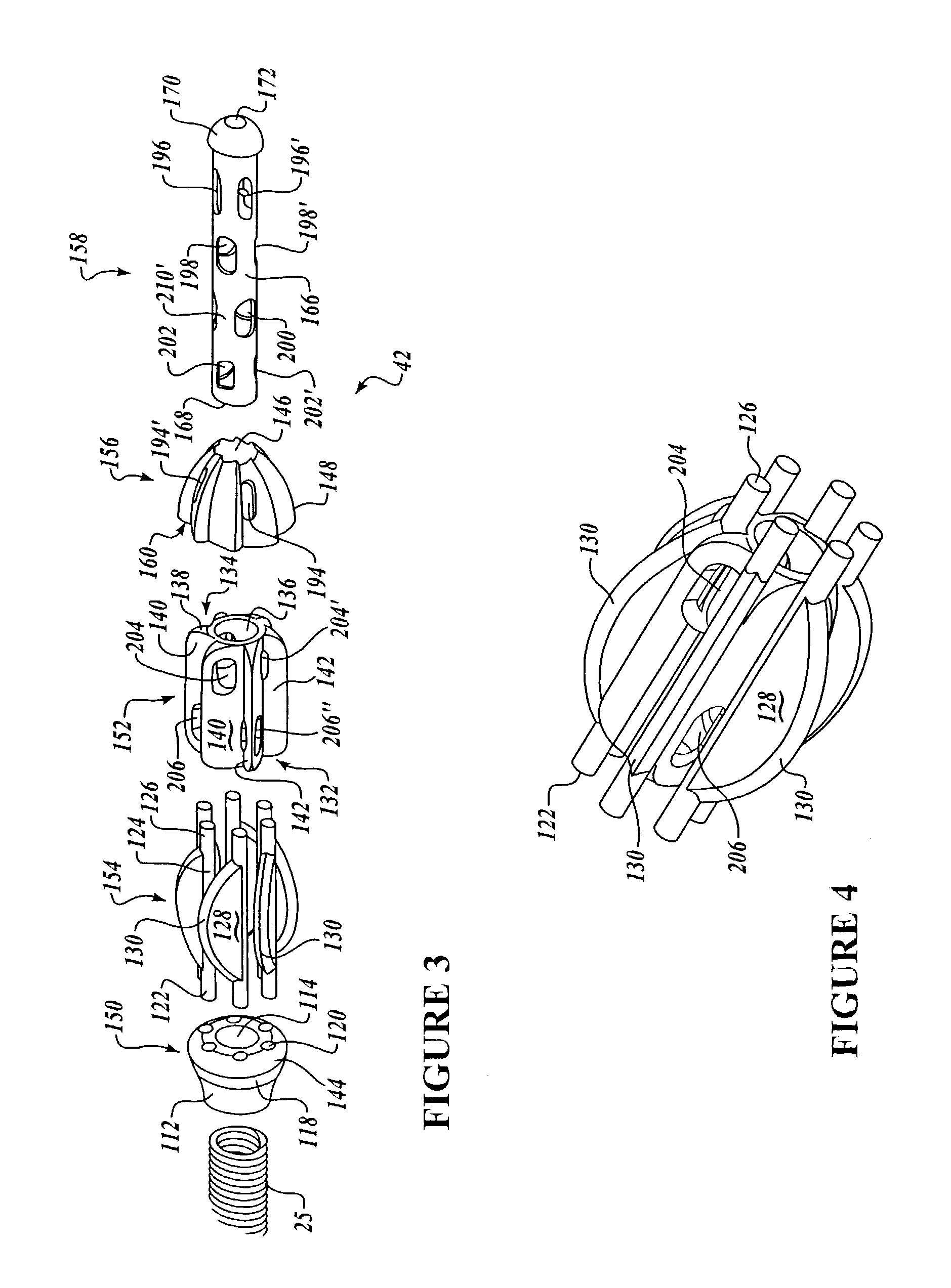Intralumenal material removal using a cutting device for differential cutting
a cutting device and intralumenal material technology, applied in the field of systems and methods for removing materials, can solve the problems of inability to remove hard materials, manifestly critical safety and reliability of the system, and inability to deform hard materials, etc., to achieve the effect of reducing the viscosity of materials, facilitating removal through relatively small diameter lumens, and reducing the complexity and rigidity of materials
- Summary
- Abstract
- Description
- Claims
- Application Information
AI Technical Summary
Benefits of technology
Problems solved by technology
Method used
Image
Examples
Embodiment Construction
[0044]As used herein in the description of various components, “proximal” or “antegrade” refers to a direction toward the system controls and the operator along the path of a drive system, and “distal” or “retrograde” refers to the direction away from the system controls and the operator and toward or beyond a terminal end of the cutter assembly. In general, the material removal system of the present invention comprises a cutter assembly positioned at the distal end of the material removal system.
[0045]Exemplary material removal systems, components and subassemblies suitable for use in connection with methods and systems of the present invention are disclosed and described in the U.S. patents incorporated herein by reference, and in PCT Patent Publication WO 01 / 76680, entitled “Intralumenal Material Removal Systems and Methods”, which is incorporated herein by reference in its entirety. In particular embodiments, cutter blades of the cutter assembly operate according to differential...
PUM
 Login to View More
Login to View More Abstract
Description
Claims
Application Information
 Login to View More
Login to View More - R&D
- Intellectual Property
- Life Sciences
- Materials
- Tech Scout
- Unparalleled Data Quality
- Higher Quality Content
- 60% Fewer Hallucinations
Browse by: Latest US Patents, China's latest patents, Technical Efficacy Thesaurus, Application Domain, Technology Topic, Popular Technical Reports.
© 2025 PatSnap. All rights reserved.Legal|Privacy policy|Modern Slavery Act Transparency Statement|Sitemap|About US| Contact US: help@patsnap.com



